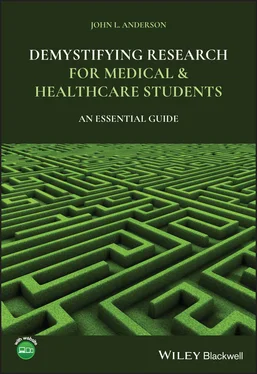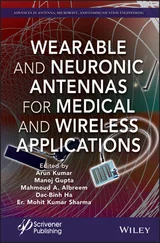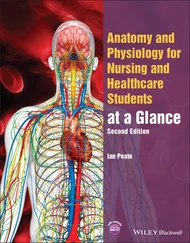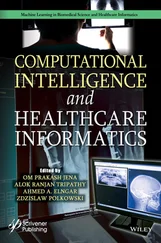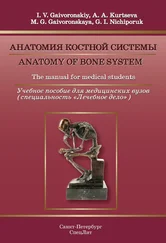1 Cover
2 Dedication Page To my wife, Clair. Thank you for all your love and support – and for making it fun!
3 Title Page
4 Copyright Page
5 Preface
6 About the Companion Website
7 CHAPTER 1: Introduction:The Aims of this Book What is ‘Research’? Overview of Research Methods The ‘Sciences’ of Research To Sum Up Final Word References
8 CHAPTER 2: Experimental Quantitative Approaches:Introduction The ‘Logic’ of the Experimental Approach A Basic Experiment Experimental Designs Using Yourself as a Guinea‐Pig Why Have a Control Group? Example 1: Martin Seligman's Learned Helplessness Experiments Example 2: My Own Experiment Randomisation To Sum Up References
9 CHAPTER 3: Experimental Quantitative Approaches:Introduction Example 1: The Nineteenth‐Century Cholera Epidemic in London Example 2: The Paddington Station Experiment Example 3: Urban Sound Planning in Brighton and Hove Example 4: An Experiment to Examine T2DM Decision Making Example 5: Reduction of Postoperative Pain by Encouragement and Instruction of Patients To Sum Up References
10 CHAPTER 4: Experimental Quantitative Approaches:Introduction Phase 0 Clinical Trials Phase I Clinical Trials Phase I Clinical Trials in Oncology Phase II Clinical Trials Safety in Clinical Trials Why Do People Take Part in these Trials? To Sum Up References
11 CHAPTER 5: Experimental Quantitative Approaches:Introduction Equipoise RCT Research Design Blinding Example 1: Streptomycin treatment of pulmonary tuberculosis Example 2: Randomised, prospective, single‐blind comparison of laparoscopic versus small‐incision cholecystectomy Example 3: Arthroscopic Partial Meniscectomy versus Sham Surgery for a Degenerative Meniscal Tear Discussion References
12 CHAPTER 6: Observational Quantitative Approaches:Introduction Example 1: The 1946 National Birth Cohort (MRC National Survey of Health and Development) Example 2: The mortality of doctors in relation to their smoking habits – a preliminary report Example 3: The Framingham Heart Study Example 4: Psycho‐Social Aspects of Breast Disease and Its Treatment Sampling in Cohort Studies Data collection Issues around Recruitment and Retention Pros and Cons of Cohort Studies Physical Activity and Risk of Ovarian Cancer: A Prospective Cohort Study in the United States To Sum Up References
13 CHAPTER 7: Observational Quantitative Approaches:Introduction Example 1: Smoking and Lung Cancer The Case‐Control Study Approach Example 2: Depression and disability in people with podoconiosis Measuring Your ‘Suspect Variable’ Uses Matching Cases and Controls To Sum Up References
14 CHAPTER 8: Observational Quantitative Approaches:Introduction Example 1: Life Before Death Example 2: Health and Sickness: The Choice of Treatment: Perception of Illness and Use of Services in an Urban Community Example 3: Musculoskeletal Injuries in Real Tennis Questionnaires and Interviews To Sum Up References
15 CHAPTER 9: Observational Quantitative Approaches:Introduction Example 1: Patients’ Recall of Information In a Rheumatology Out‐Patient Clinic Using Cross‐Sectional Approaches Instead of Cohort Studies Example 2: An Exploration of Listening Concepts in UK Medical Students Example 3: A Study of the Use of Complementary and Alternative Medicines by Breast Cancer Patients Studies of Patients’ Records To Sum Up References
16 CHAPTER 10: Qualitative Ethnographic Approaches:Introduction Example 1: Crime and Custom in Savage Society Example 2: Street Corner Society: The Social Structure of an Italian Slum Example 3: Boys in White: Student Culture in Medical School Example 4: Being Sane in Insane Places Discussion To Sum Up References
17 CHAPTER 11: Qualitative Ethnographic Approaches:Introduction Interview methods Example 1: ‘A comparison of HIV‐related risk behaviour and risk reduction between female street working prostitutes and male rent boys in Glasgow’ and ‘HIV‐Related Risk Practices among Glasgow Male Prostitutes: Reframing Concepts of Risk Behaviour’ Example 2: Traditional Beliefs about Respiratory Infections in Children in a Rural Area in Southeast Nigeria Focus Groups Focused Ethnographic Study (FES) of ARI To Sum Up References
18 CHAPTER 12: Qualitative Ethnographic Approaches:Introduction Example 1: Studying Medicine with Dyslexia: A Collaborative Autoethnography Types of Autoethnography Example 2: Ulcerative Colitis: An Autoethnographic Case Study The Method Example 3: Being An Echocardiographer in the UK NHS: An Autoethnographic Study Autoethnography vs. participant observation To Sum Up References
19 CHAPTER 13: Qualitative Approaches:Introduction Two Main Schools of Phenomenology Example 1: The lived experience of postpartum depression: a phenomenological study Example 2: The experiences of medical students with dyslexia: an interpretive phenomenological study Example 3: Coping with Medical School: An Interpretive Phenomenological Study To Sum Up References
20 CHAPTER 14: Qualitative Approaches:Introduction Grounded theory: an overview Example 1: Handling Hopelessness –Doctor–Patient Interactions in Phase 1 Oncology Trials To Sum Up References
21 CHAPTER 15: Mixed Methods:Introduction Case studies: an overview Example 1: First clinical use of penicillin Example 2: First Case of 2019 Novel Coronavirus in the United States Case Series Example 3: Coping with Medical School To Sum Up References
22 CHAPTER 16: Mixed Methods:Introduction Analysis of an Existing Policy Example 1: The Discovery of Hyperkinesis: Notes on the Medicalisation of Deviant Behaviour Analysis of a Proposed Policy Example 2: School Closure and Management Practices during Coronavirus Outbreaks Including COVID‐19: A Rapid Systematic Review To Sum Up References
23 CHAPTER 17: Mixed Methods:Introduction Example 1: The Experiences of Medical Students with Dyslexia Example 2: An Experiment to Examine T2DM Decision Making To Sum Up References
24 CHAPTER 18: Research Ethics and Governance:Introduction Guiding Principles Past Abuses in Research Clinical Trials (Phase I Trials) Falsification in Research Corruption in research? Not in our time??? A Swine Flu Conspiracy? Fraud in Research International Regulations and General Principles The Declaration of Helsinki To Sum Up References
25 CHAPTER 19: Research Ethics and Governance:Introduction Research vs Practice Not all Research Activities are Classed as Research by the HRA Research Sponsorship Chief/Principal Investigator (CI/PI) Research and Development Departments (R&D) How to Apply for HRA REC Approvals: IRAS – The Integrated Research Application Service Good Clinical Practice (GCP) GDPR Research Conducted Overseas Research Passports/Honorary Contracts Student Safety Competence Publications To Sum Up References Further Resources
26 Appendix A: Research Skills: Obtaining Informed ConsentIntroduction The Next Issue Is: Can Everyone Read it and Understand it? To Sum Up References
27 Appendix B: Research Skills: Searching the LiteratureIntroduction Conducting a Literature Search The Prisma Diagram Assessing the Quality of Published Work Data Extraction Data Analysis References
28 Appendix C: Research Skills: Laboratory SafetyLab Safety Is a Serious Matter The Researcher's Safety Other People in the Lab The Environment Society in General References
29 Appendix D: Research Skills: InterviewingIntroduction Unstructured Interviews Phase 1: Introduction Facilitation Silence Probing in Depth Clarification Re‐Focusing Dealing with Sensitive Topics Dealing with Tears Endings Managing Recordings References
30 Appendix E: Research Skills: Focus GroupsIntroduction Numbers Participants The Setting Facilitator and Co‐facilitator Issues of Social Power Dominant/Reticent Participants Dealing with Disclosures The Structure of a Focus Group Discussion Ground Rules Communications Between Facilitators (Signals) Additional Reading
Читать дальше
